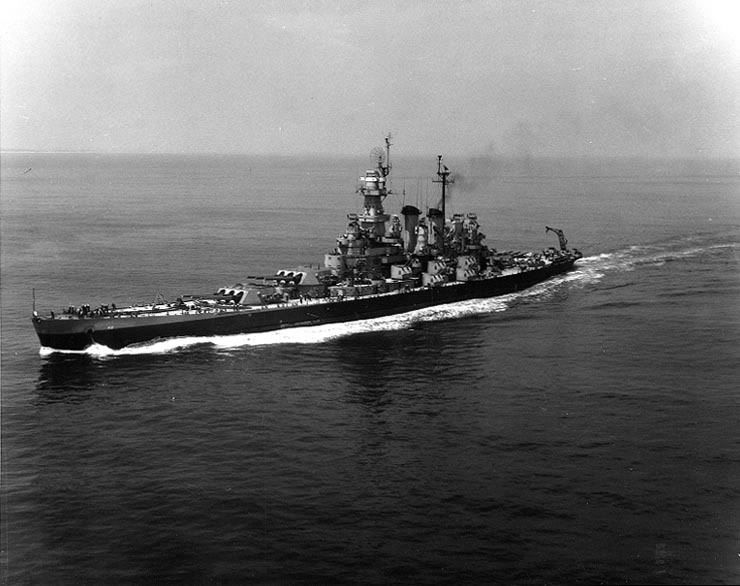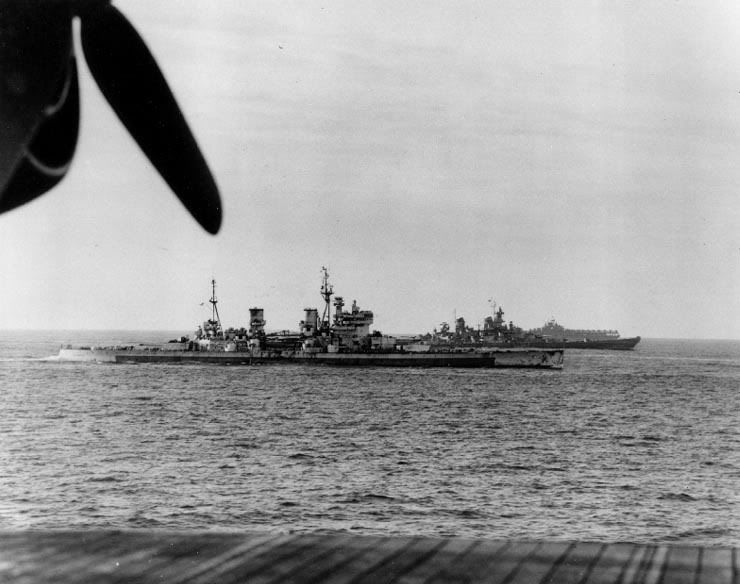Back from the dead, I present a comparison thread on warships. At the moment, it's mostly WWII vintage ships that i've done. Anyways, I was partially inspired from
this page at the Combined Fleet website.
Here's the first one I did:
Having been oddly inspired by
this page at Combinedfleet.com, I thought i'd do a comparison of my own between the various ships of WWII.
Anyways, in the 'treaty' battleship department...
North Carolina-class Battleship vs. King George V-class Battleship
VS.

Main guns: nine 16inch/45caliber guns versus ten 14-inch/45caliber guns. Absolute maximum gun range is, assuming a gun elevation of 45 degrees, 36,900 yards for the North Carolina-class. The KGV's absolute maximum gun range is, assuming 40 degree elevation, is 36,850 yards. (Costal battery version of the 14/45 gun at 45 degrees is roughly 51,000 yards.) In terms of shell weight, the North Carolina's guns used 2,700 pound shells, whilest KGV used 1,590 pound shells.
Comments: The Mark VI naval rifles used by the USN on the North Carolina and the South Dakota-class of battleships were very similar to the later MK VIIs used by the Iowa-class. The primary differences were that the MK VI gun was lighter and had a shorter range. However, because of the gun's lower muzzle velocity, it actually had better deck armour penatration than the later guns used by the Iowa. The KGV's 14-inch guns had quite a few problems initialy in service, namely they could very easily jam in combat. The biggest examples were the HMS Prince of Wales at The Battle of Denmark Straight, and HMS King George V at The last battle of the Bismarck. To be perfectly fair, PoW was a brand new ship that hadn't had all of its kinks ironed out. KGV's problem is attibuted more toward fatigue than anything. The gun in terms of operation was based off of the Mark I 15inch/42caliber gun used by the Queen Elizabeth-class, the Revenge-class battleships, the Renown-class Battlecruisers, HMS Hood, etc, in that a heavier shell would be fired from a lower velocity gun. This descion was made, in part due to the fact that the Nelson-class battleship's guns basically fired lighter shells at a higher velocity. The barrel life and reliability of the 16-inch gun used on the Nelson-class was lower than the older 15-inch guns mounted on the aformented warships. At least, that's the logic behind that.
In the end, the MK VI 16-inch gun used on the North Carolinas and the South Dakotas are more powerful, due in part to the much heavier shells fired from the 16-inch, and better armour penatration all around.
Secondary guns: North Carolina mounted twenty 5"/38caliber guns, used mainally as heavy AA guns to devastating effect against aircraft. The King George V mounted a total of sixteen 5.25 dual-purpose guns. In terms of rate-of-fire, the 5inch gun used by the American Battleship are superior. (Assuming pedestle and lacking any intergral hoists: 12 to fifteen rounds per minute. Assuming same for the 5.25 DP gun, 7 to 8 rounds per minute. The only ship that fired this faster was the HMS Vanguard, at nine rounds per minute.)
The reason for this was the fact that the 5 inch shell used on the USN ships was becausse of the fact it was much lighter than the 5.25 DP, yet it was still quite powerful. The 5.25 DP was still a effective weapon, particularly with proximity fuses.
The winner would be the North Carolina-class.
AA weaponry: Late-War USS North Carolina mounted sixty 40mm Borfors and fourty-eight Oerlikons. By comparison, late-war HMS King George V mounted as many as sixty-four 2-pound Pom-Pom guns. (Roughly 40mm) The primary issue with the Pom-Poms were that they were prone to jamming a lot, particularly early-on in the war. The Royal Navy eventually ironed out much of the kinks, and they were considered good AA, if not as solid as the 40mm Borfors, which was interduced on US warships from late 1942-on.
Fire control systems: North Carolina mounted the powerful MK. I radar system. The British radar fire-control systems were less powerful than the US equivilants, as was admitted by post-war studies. (However, British radar was still pretty decent, and was miles ahead of the German equivilants.)
Winner: North Carolina. (The same fire-control system was later mounted on both the South Dakota and the Iowa-classes.)
Armouring: North Carolina's main armour belt was 12-inches thick, inclined at 15 degrees. King Geoge V's armoured belt, on the other hand, was 15.4 inches thick. Turret armouring of the North Carolina at thickest was sixteen inches thick. On the hand hand for KGV, the turret armouring at thickest was 12.75 inches thick.
In terms of armouring, the King George V is the winner.
Top Speed: King George V's projected top speed was originally 30 knots, but generally accepted top speed is 28 to 29 knots. North Carolina's top speed was 27 knots, however, due to problems with the propellers, the North Carolina-class violently vibrated and as such until they were replaced the best top speed they did was 24 knots. For the purposes of this comparison, the North Carolina-class ford not suffer from this.
Advantage: KGV, marginally.
Fuel range: King Geroge V's maximum nautical range was 5,400 miles. The rational behind the relatively short range of the King George V-class was that it could re-fuel at British bases all around the world. This proved to be more of a liability than an advantage in pratice. On the other hand, the North Carolina-class, designed to operate in both the pacific and atlantic oceans, had excellent endurance. The North Carolina-class at a crusing speed of 15 knots had a range of 16,300 miles.
Advantage: North Carolina.
The overall winner between the two is the North Carolina-class battleship. The North Carolina simply boasted more powerful guns, as well as better radar fire-control systems. (A big example was USS Washington, second ship of the North Carolina-class, versus the HIMS Kirishima at the second battle of Guadcanal, where Washington took out the Kirishima whilest taking minimal damage itself. Kirishima took at least nine direct AP hits against Washington, which is what knocked her out.) The KGV has better armour, and is slightly faster, but not fast enough to make a difference in combat against the North Carolina.

